Creamy and irresistible, I believe this is the best sweet ricotta pie ever! And I have tried many over the years. The crust is the classic Italian pasta frolla, the filling comes together in minutes and is flavored with lemon. It's the perfect dessert for Easter, among other celebrations.
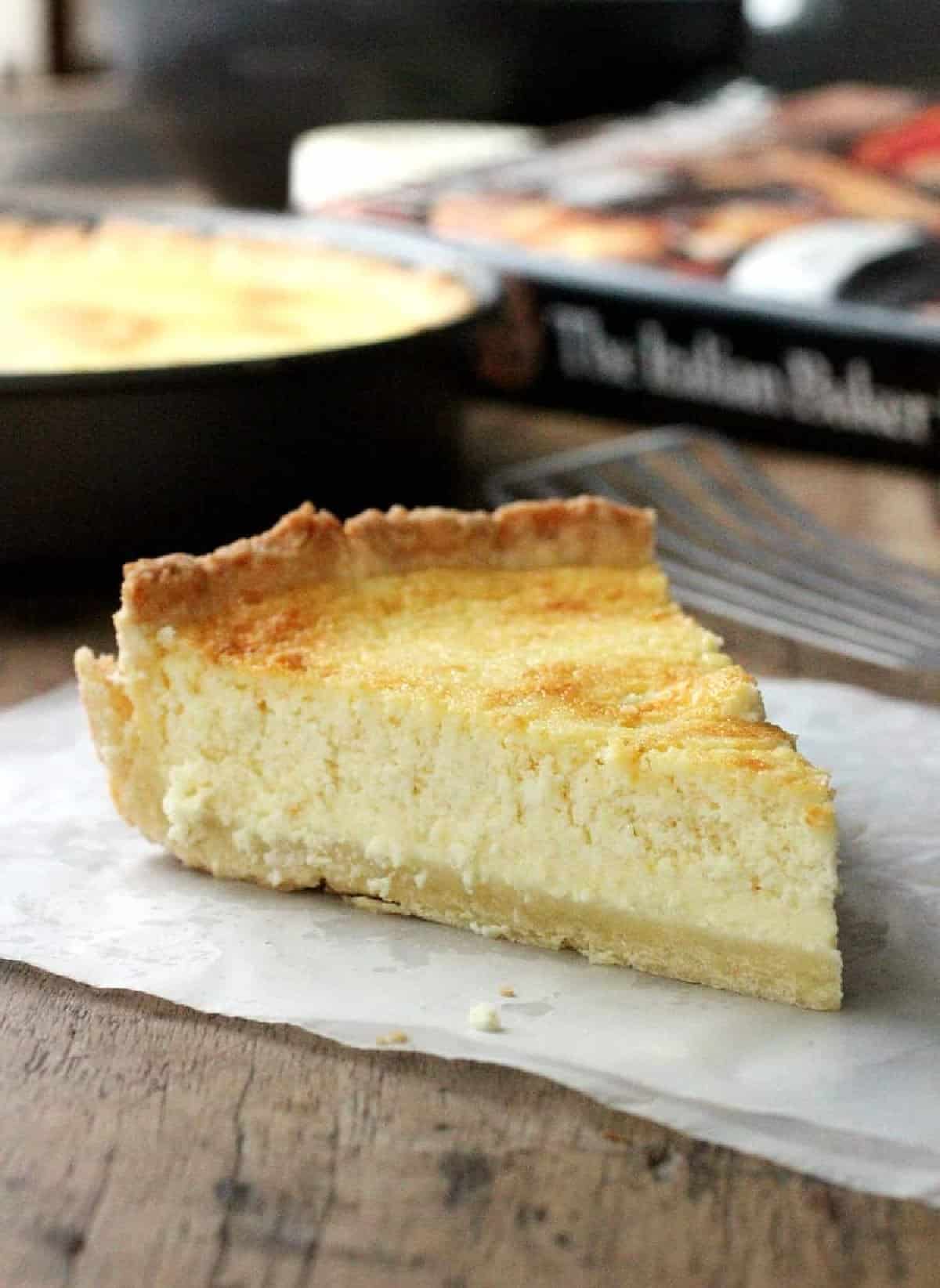
For those of us who like Italian desserts, baking with ricotta is common, both sweet like this ricotta pie recipe or the popular ricotta cheesecake, and savory where we whip ricotta toast in a matter of minutes.
And we eat it year-round, especially for Easter and also many birthdays, at least in our household, where this lemony ricotta cheese pie with its soft but rustic texture, is requested often. It's not cake, I know, but it's a tradition.
This is a pie that can accommodate different flavors, especially citrus.
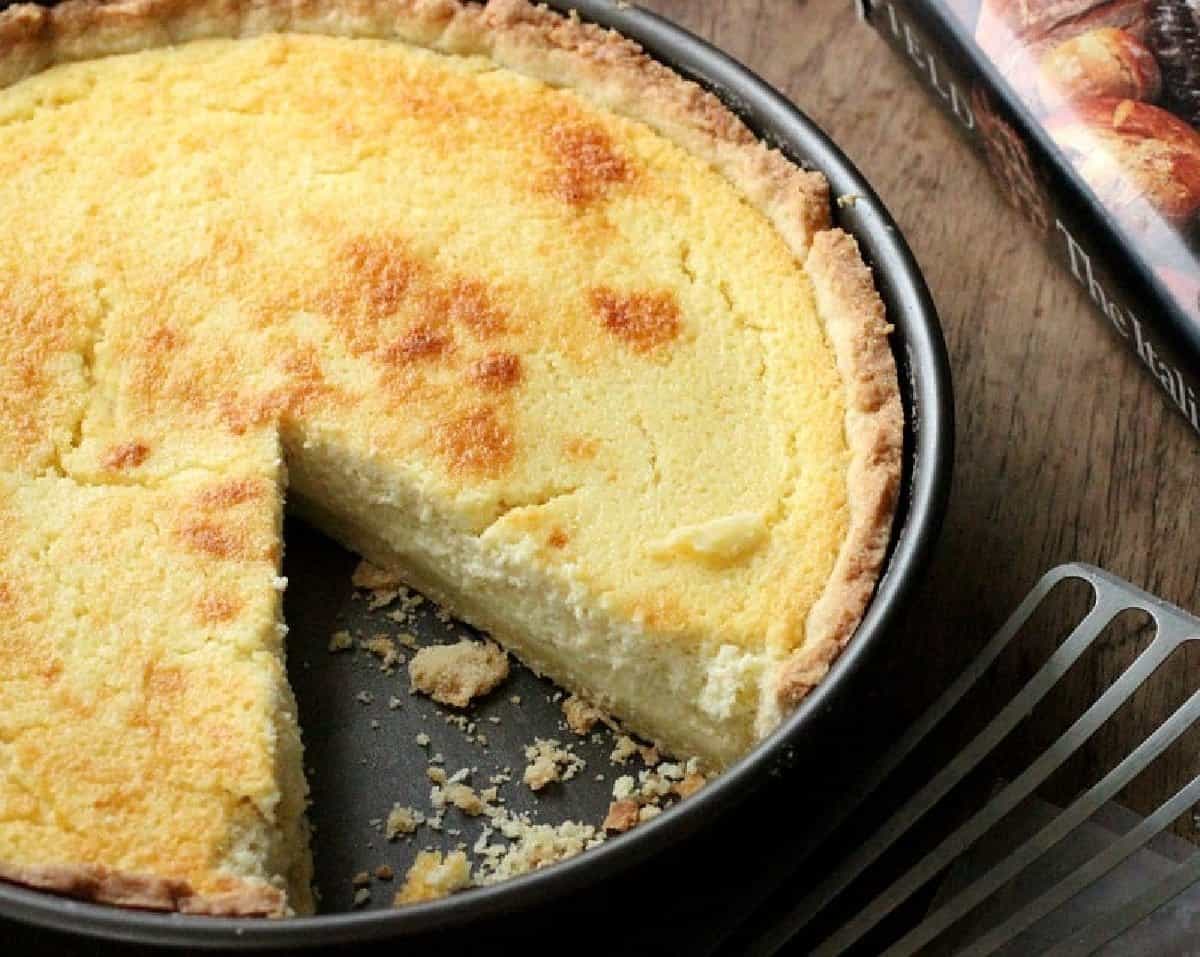
Ingredients
- Sweet pie crust. The Italian pasta frolla is the traditional dough for this pie.
- Ricotta. Use full-fat ricotta cheese for a richer and tastier pie. But you can use low fat and the pie will still be good.
- Eggs. Fresh, large, grade A.
- White granulated sugar.
- Flour. Use all-purpose, cake or pastry flour, all of them work as only a tablespoon is needed to firm up the filling.
- Salt: I use kosher salt for my baking, but table salt also works.
- Cream. Heavy or double cream for best results.
- Sour cream. The regular, full fat type.
- Lemon zest and lemon juice.
- Vanilla - I use pure vanilla extract or pure vanilla paste when available, but a good vanilla essence (artificially flavored) also works.
- Marsala. It's a sweet wine used a lot in Italian baking recipes. You can omit it and use more vanilla extract. But it gives it a unique flavor.
What is ricotta cheese?
Ricotta is a soft, grainy cheese made from cow's milk in this case (though it can also be made with goat, sheep, or buffalo milk). The type I use for all of my recipes is the regular ricotta sold in supermarkets or specialty stores. It's creamy, moist, and has an almost sweet taste.
Are you familiar with it?
Quality varies according to brands and you can find some with additives to make it thicker or whatever. I try to buy original ricotta sourced from good small producers. It tastes much better and I like the consistency more.
I always use whole milk ricotta for this pie. You can also make your own homemade ricotta and the flavor will improve a lot.
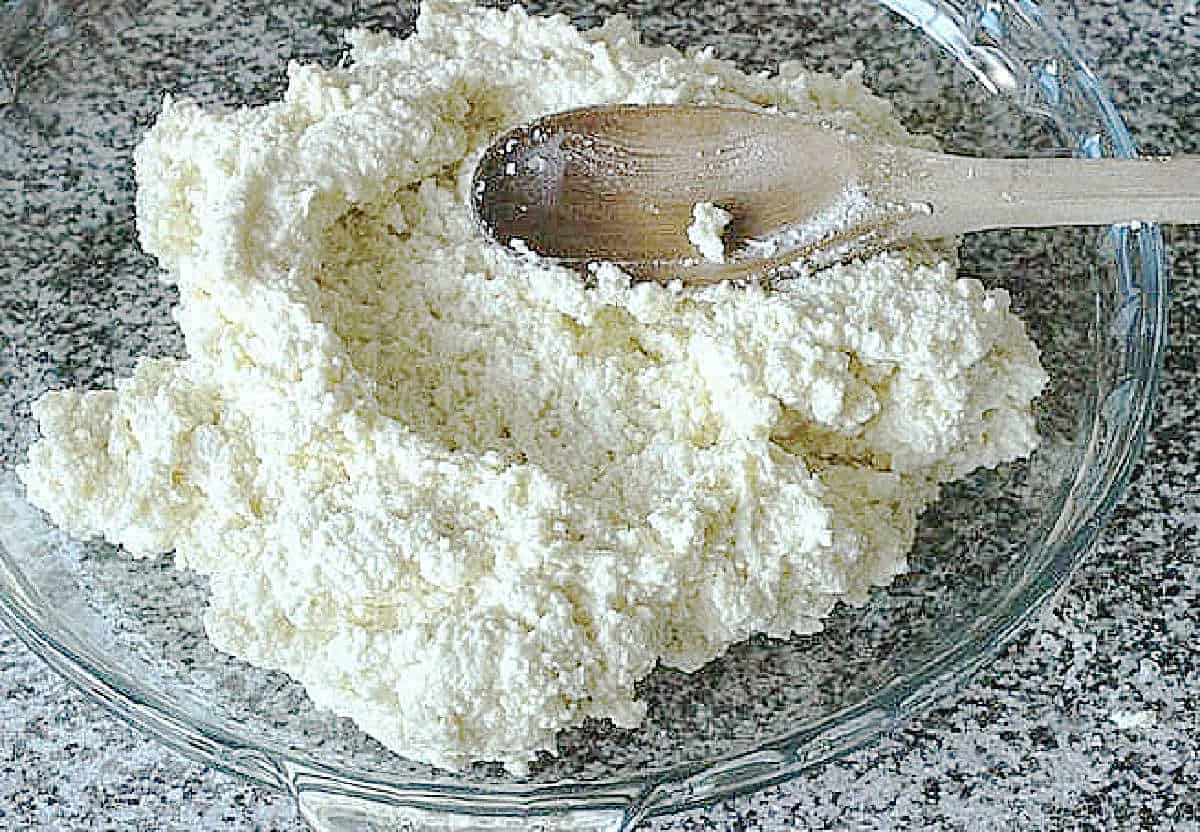
The ricotta filling
The filling is a mixture of this soft cheese, eggs, flavorings, and a few other pantry ingredients. Very easy to put together since it's a matter of mixing them all in a large bowl with a whisk or spatula.
Ricotta: it might be watery as natural yogurt sometimes is. So you might need to drain it if that is the case. Simply put a colander with a cheesecloth over a bowl, add the ricotta and wait until the liquid has collected. Use it directly. If leaving it do drain overnight or for several hours, cover the bowl and refrigerate it.
No need to beat: use a hand whisk (best option), a spatula, or a wooden spoon to mix the filling. No need for an electric mixer.
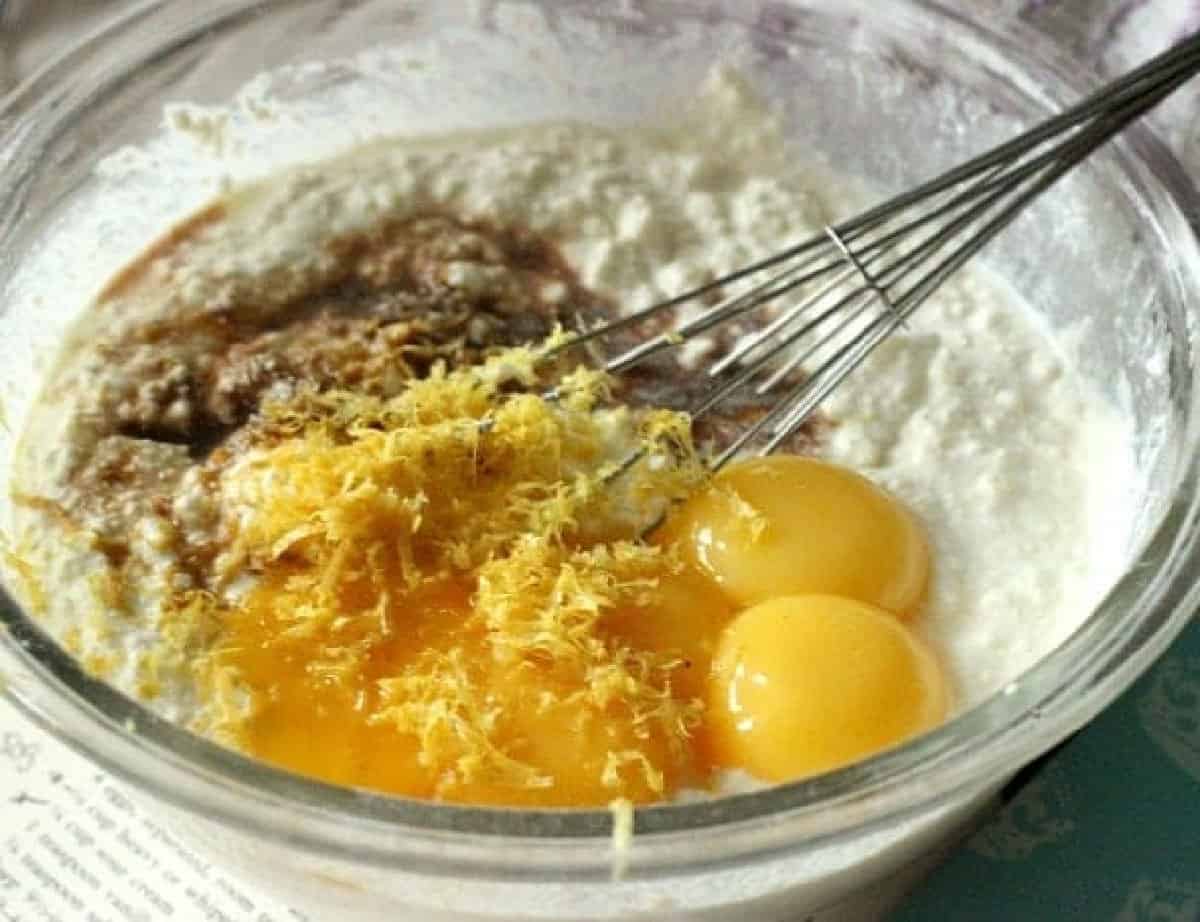
What is pasta frolla or Italian sweet pie dough?
It's an Italian-style, sweet pie dough and there's a whole post in this blog dedicated to it, the Italian pie crust recipe (pasta frolla).
It's made with flour, butter, egg, sugar, and sometimes a pinch of baking powder which makes it less short or snappy than a regular sweet dough recipe. Flavorings are sometimes added too.
As with any sweet crust, you can make it by hand or in the food processor and both techniques are explained in the post. It can be kept in the fridge, well wrapped, for a few days, or frozen for up to a month.
It's very friendly when rolling it and doesn't need to be very thin. We love it for some fruit free-form tarts, like the rustic peach galette.
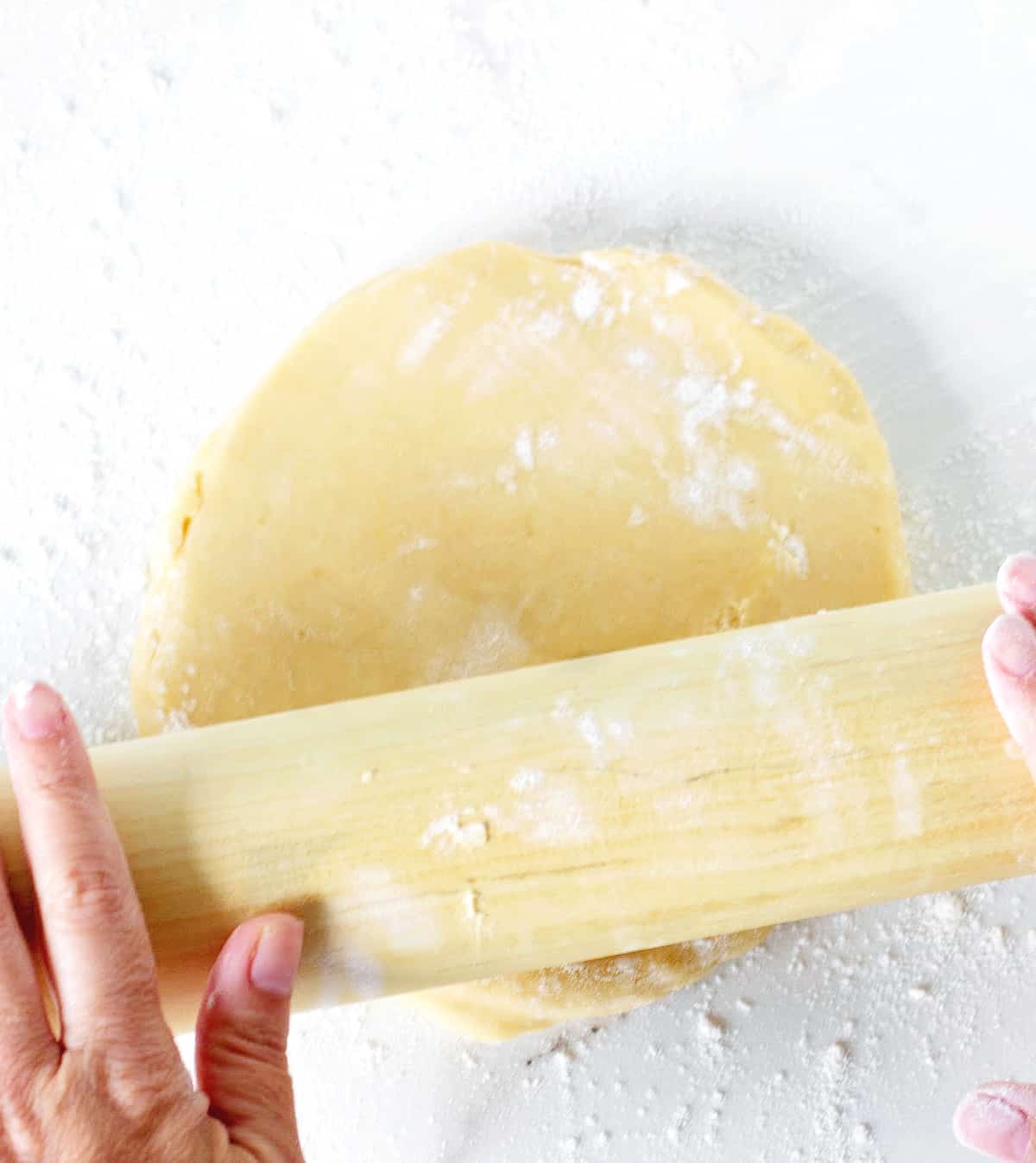
Rolling the dough
Start with cold dough. Keep it in the fridge up until you have everything set up. You want to keep it as cold as possible while rolling it so it's easy to manipulate and doesn't break when you line the pie pan.
Organize your space. Make sure you have ample space in your counter, some flour ready to lightly dust the surface, the rolling pin, the pan, and, ideally, a pastry or dough scraper (or cornet) or cookie spatula to help you lift it up after it's rolled.
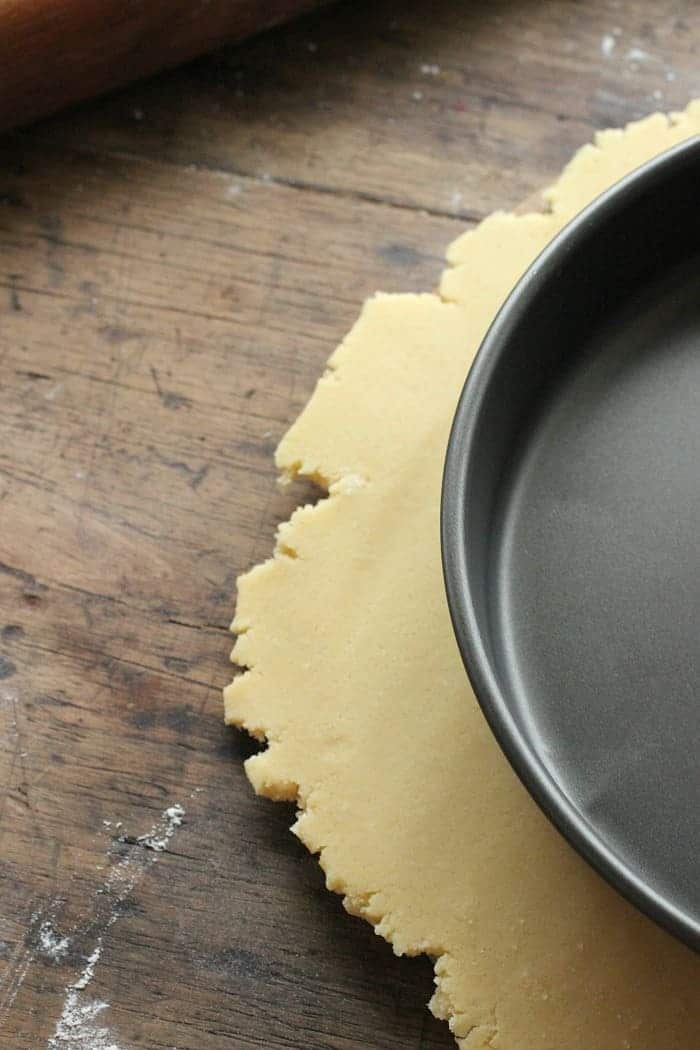
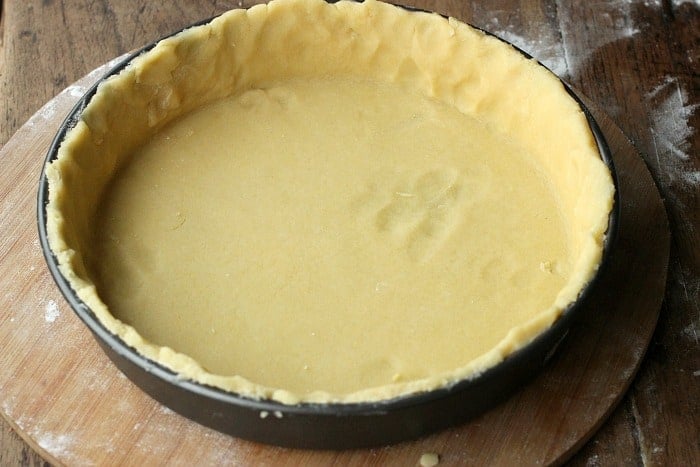
The dough is a tad softer than regular sweet pie dough, which we want to be flaky and crunchy whenever possible, and bake it blind to achieve that. Here we go for a more tender one (baking powder helps with that) and bake it directly with the filling.
It is the dough used for crostatas, which is the Italian version of lattice pie, like this fig jam pie.
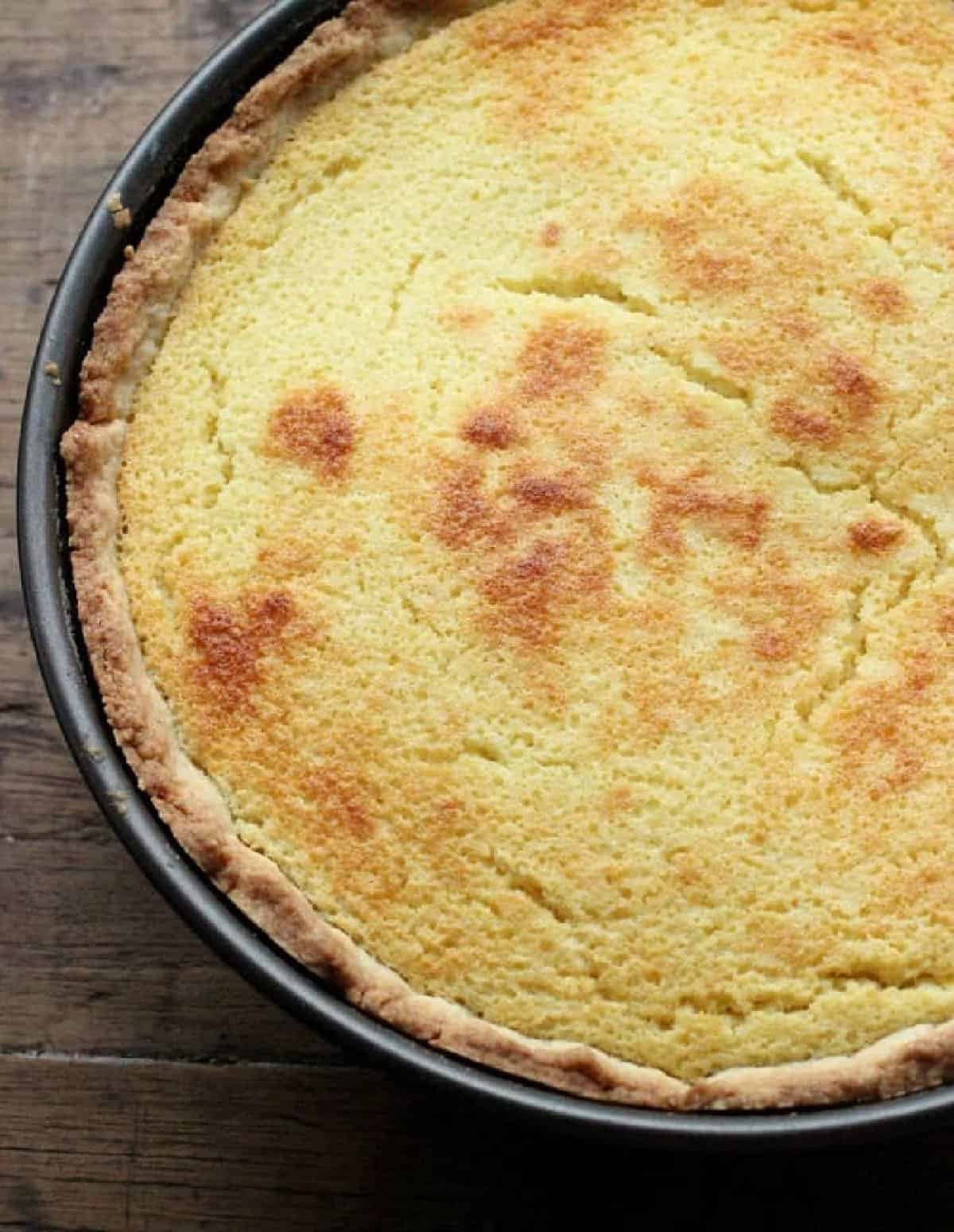
Simple ingredients make the best desserts.
I've always loved that about Italian food, how they take a basic ingredient and turn it into an amazing dish, like this tomato focaccia or my favorite mushroom risotto recipe.
The recipe is adapted from a fantastic cookbook, The Italian Baker, by Carol Field. It was revamped and printed again, and I highly recommend it for Italian sweets and baking.
If this amazing ricotta pie is not on your Easter and Thanksgiving pie list, it should be. Once you get familiar (in case you aren't) with this type of creamy pie, you'll add it to your list of great recipes, those you make again and again.
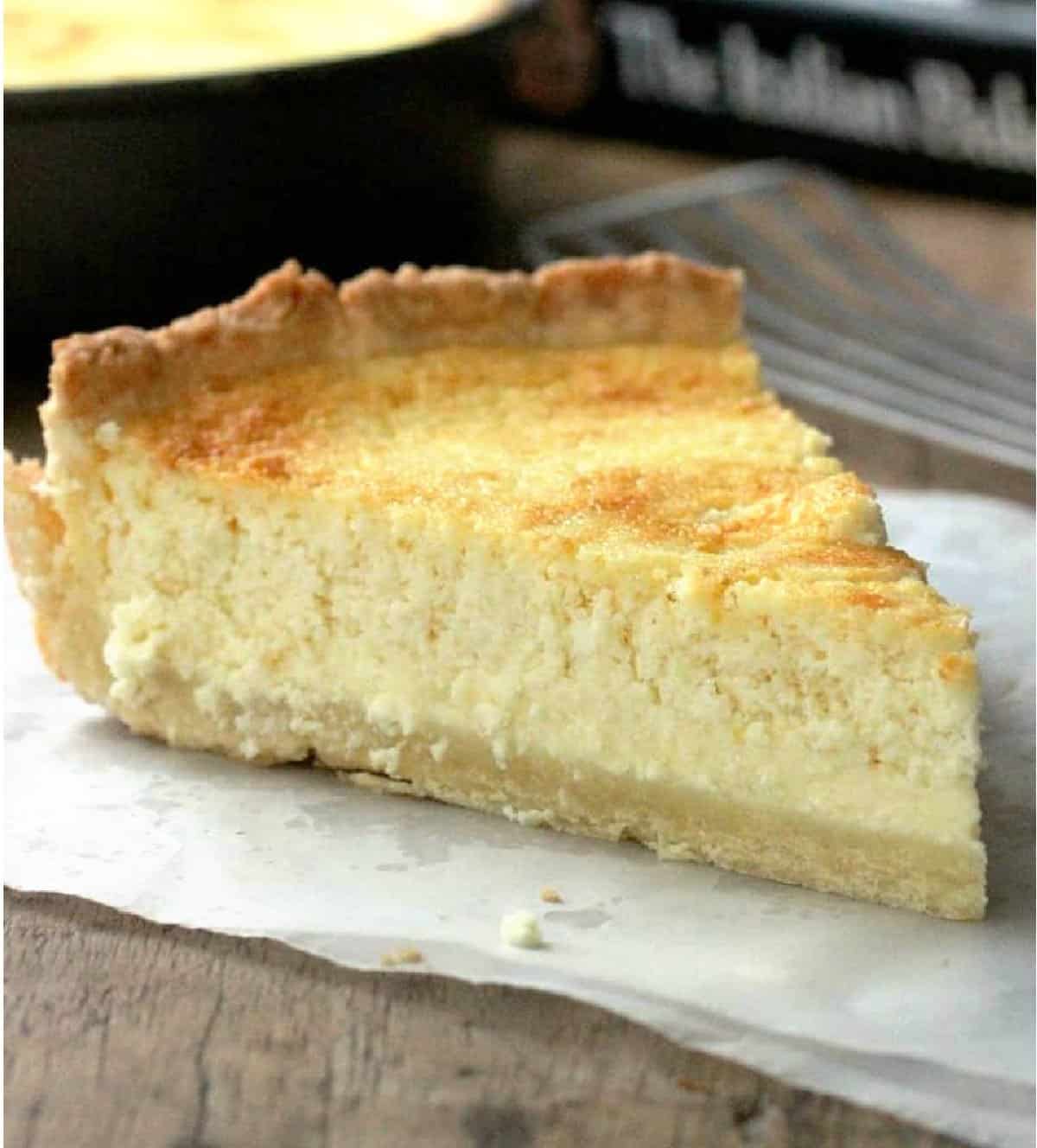
Related recipes you might like:
Let me know in the comments below if you made this recipe and loved it and if you had issues so we can troubleshoot together. I love to hear what you think, always. Thanks for being here. It's much appreciated.
You might also consider subscribing to our FREE email series 'Baking the Best' and our regular newsletter. Or connect via Facebook, Instagram, and Pinterest.
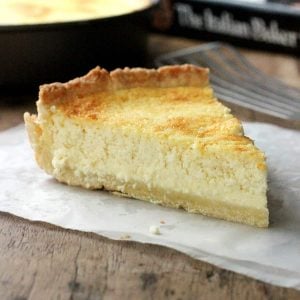
The Best Italian Ricotta Pie
Ingredients
For the dough:
- 1 recipe for Italian Pie Crust, pasta frolla recipe
For the filling:
- 1 pound whole-milk ricotta, drained if it’s too watery, see Notes below
- ½ cup 100g sugar
- 1 tablespoon flour, all-purpose or cake
- 4 eggs, separated and at room temperature
- ¼ cup 50g double or heavy cream, at room temperature
- ¼ cup 75g sour cream, at room temperature
- 1 teaspoon vanilla extract, or 2 if not using marsala
- Pinch of salt
- 3 tablespoons Marsala wine, optional but recommended
- 1 tablespoon lemon zest
- 1 teaspoon lemon juice
Instructions
For the dough:
- Have ready a 9-inch pie pan with removable bottom. In case you don't have a pie dish, you can use a springform pan for cakes. You'll come halfway up the sides with the crust so it's roughly the same height as a pie.
- When ready to bake, roll the dough on a lightly floured counter until a few inches bigger than the pie plate.
- Carefully line the pan without stretching the dough and pinch the edges. You might need to cut a few overhanging pieces.
- Prick the bottom and refrigerate or freeze (better) while you make the filling.
- Preheat oven to 350ºF / 180ºC.
For the filling:
- Mix ricotta and gradually add sugar and flour until creamy. You can do this by hand, it just needs to be well integrated.
- Add egg yolks, cream, sour cream, marsala if using, vanilla, lemon juice, and zest. Mix well.
- Beat the egg whites with the salt until medium-firm peaks form and add them in 2 parts to the ricotta mixture with a spatula.
- Integrate them until there are barely remains of beaten whites, but don’t mix too much and don't beat.
- Pour into the cold pie shell and bake for 50-60 minutes, until the filling is almost firm and golden. It should barely giggle in the middle.
- Let cool completely on a wire rack.
- It can be kept at room temperature for two days or refrigerated, well covered, for several days.


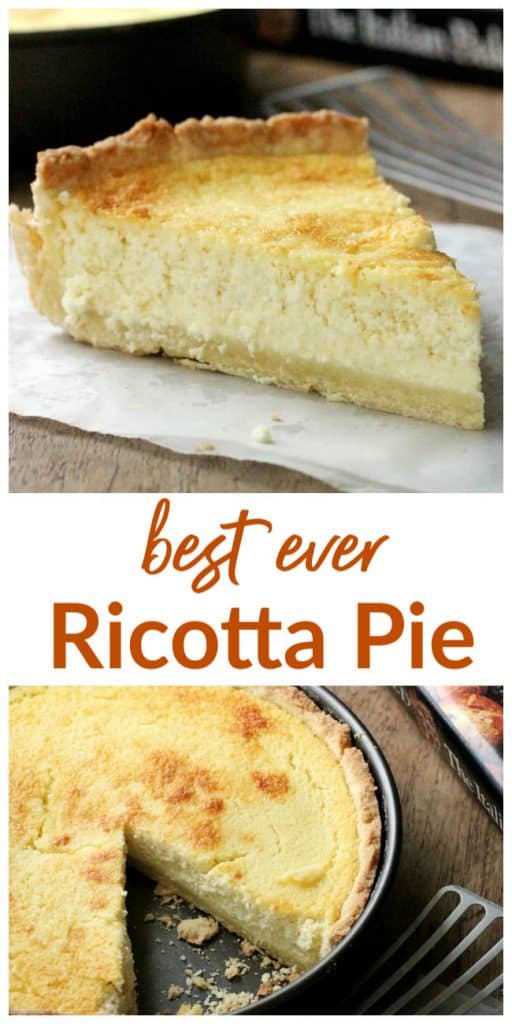
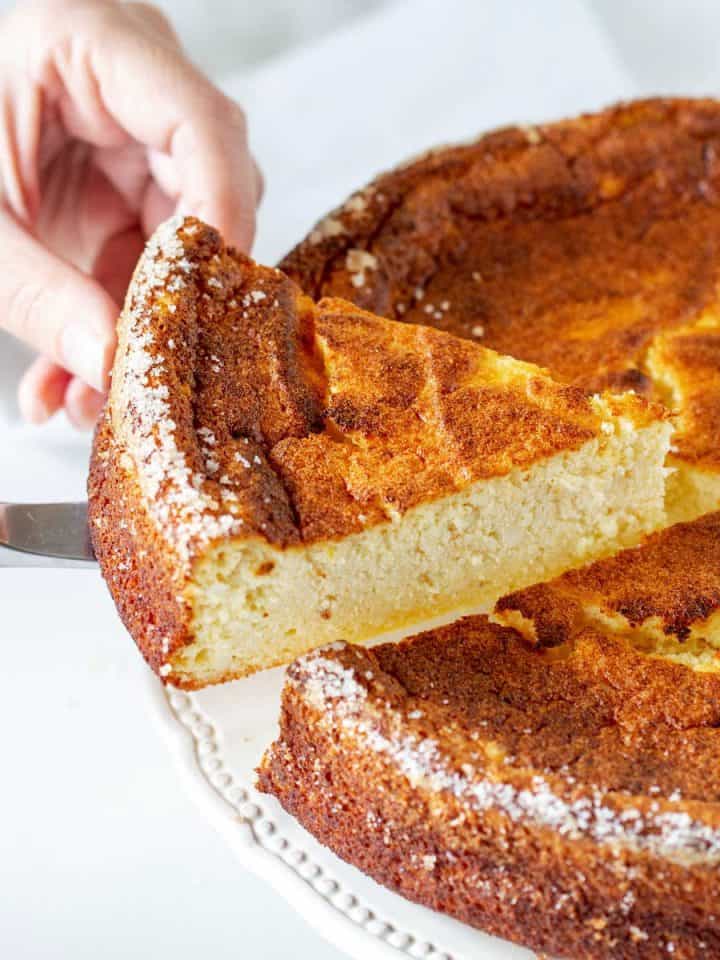
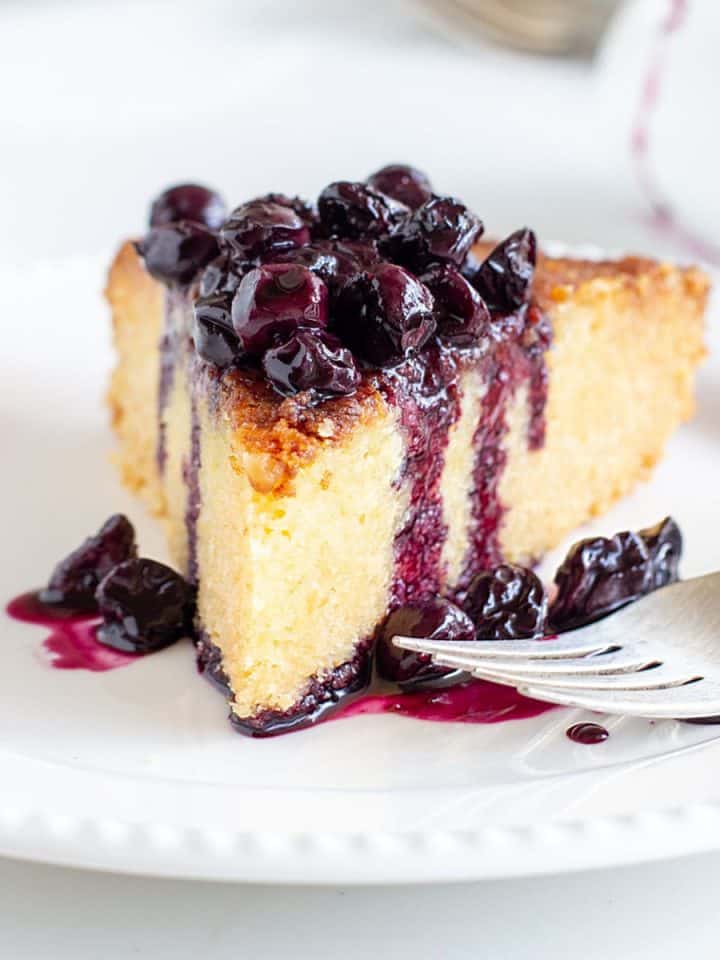
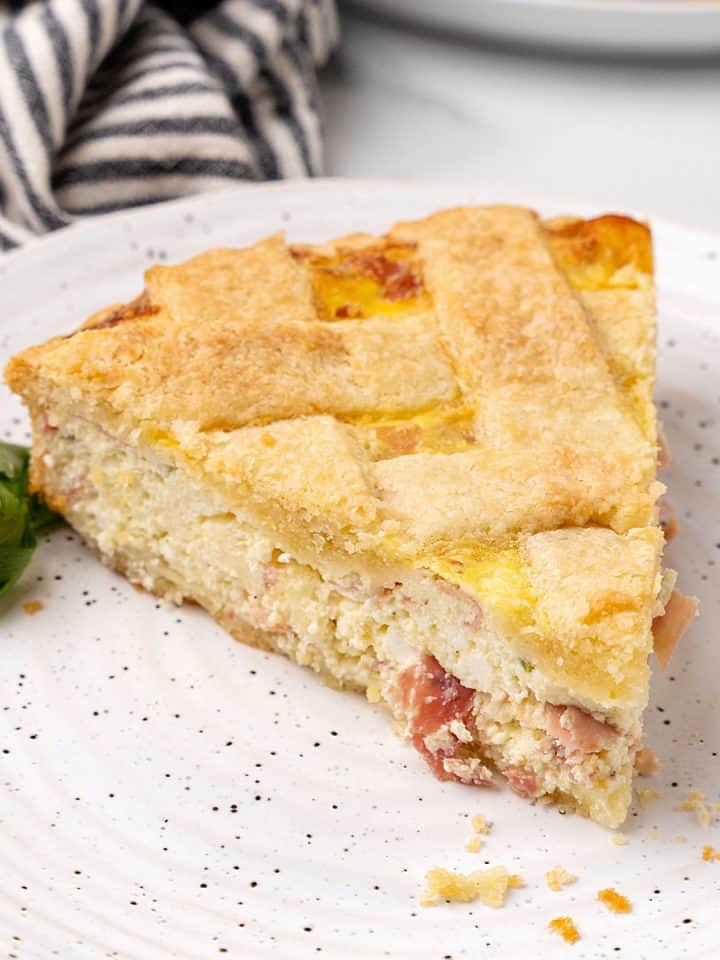
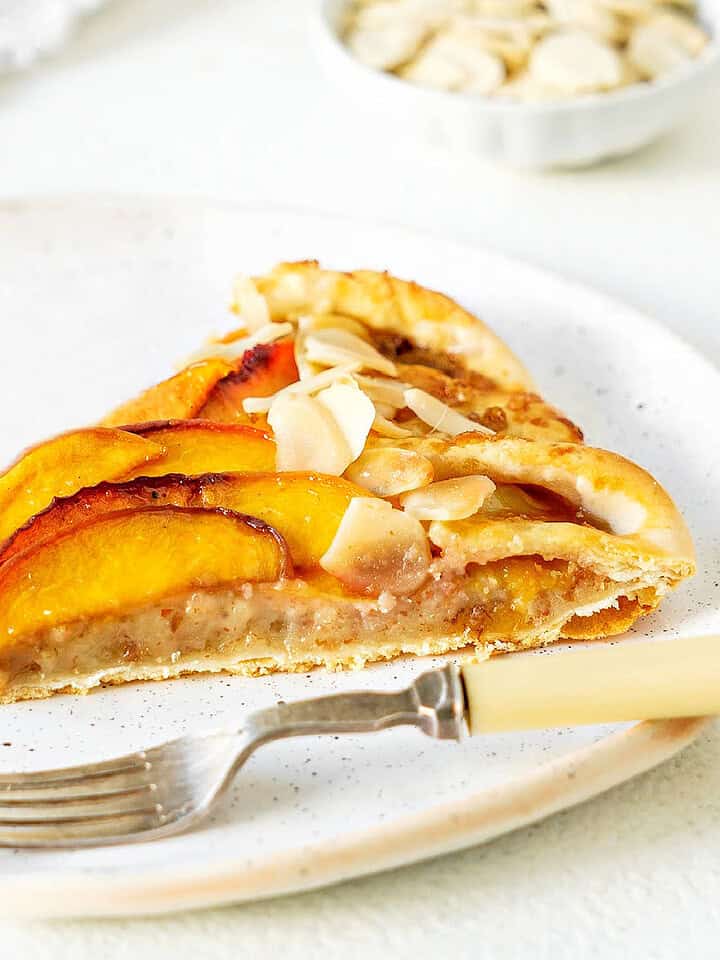
Michelle says
I haven't made it yet although I have the ingredients..I'm just wondering if the Marsala wine is the same I use to make my chicken Marsala? I'd hate to try it and ruin the recipe. I am so excited to make this w the traditional crust. Ty in advance
Michelle
Paula Montenegro says
Yes Michelle, it's Marsala for baking and it can be used in sweet and savory dishes.
Toni says
I was looking for a ricotta pie to make this Easter that recalled the one my Nonna used to make, and I'm so glad I found this recipe. The pie turned out absolutely delicious! Everyone raved about it, and it was exactly the nostalgic flavour I was looking for. Thanks so much for sharing!
Toni says
I was looking for a ricotta pie to make this Easter that recalled the one my Nonna used to make, and I'm so glad I found this recipe. The pie turned out absolutely delicious! Everyone raved about it, and it was exactly the nostalgic flavour I was looking for. Thanks so much for sharing!
Lili says
Do you have a recipe for a 6 cup Bundt cake with cardemon? I would like a simple recipe . Thank you for the wonderful cheesecake recipe!
Paula Montenegro says
Hi Lili! I do have this great cardamom bundt cake recipe posted. It's for a larger pan, but you can make half the recipe for a smaller one.
Mike says
Hi Paula,
I've made cheese cake before using, among other things, Ricotta. I wrapped the Springform Pan in aluminum foil and placed it on a deep cookie pan with water while baking. Do I need to do this with this recipe? Thank you and I look forward to trying this.
Paula Montenegro says
Hi Mike, this is a pie not a cheesecake. It has a crust so it doesn't need a water bath at all.
Vicki says
I have this in my oven right now. I had a little problem with the cold dough rolling out smoothly but I let it sit for a few minutes and soften from the refrigerator and it was easier to handle. Still not great but I managed to get it in the pan and I kind of molded it into shape with my hands trying not to overwork it. The filling smelled amazing so I’ll be looking forward to eating this tonight for dessert. By eating this I mean eating the whole thing myself. Lol. I’ll be back with the finished product review. Thanks for sharing.
Paula Montenegro says
Hi Vicky! Pie doughs need to be rolled as cold as possible to get the best results after they're baked, so a little room temperature time is needed. But always be careful not to let them soften much as they'll be hard to work with. I hope the pie was a success. Have a great weekend!
Jen says
This was amazing! My husband wanted it for his birthday cake so I was hoping it would turn out. It was perfect. It is reminiscent of Easter Pie or Pizza Grande (our family calls it). Definitely a better alternative to cheesecake. We added fresh blueberries and some fresh whipped cream for extra deliciousness. Thank you!
Paula Montenegro says
So happy to know it worked out so well Jen! And love how you served it. Similar to the ricotta cheesecake, a new recipe we just posted yesterday. Have a great week.
Pat Neill says
I accidentally bought part skim ricotta. Can I use if in the place of whole milk in this pie or ricotta cookies?
Paula Montenegro says
Hi Pat! You can use it. I like whole due to the richness and texture. I would add a tablespoon or two of melted butter or cream (or one of each) to compensate for the fat, depending on the texture of your ricotta. Part-skim has less fat content and, in my experience, tends to be drier.
carol says
can I use a regular pie pan I do not own a spring form or the other and can I add some mini chocolate chips
Paula Montenegro says
Hi Carol! Yes, you can add chocolate chips and use a regular pie plate. Happy baking.
Joanne says
I like to use a 9” by 13” glass dish. Would I need to double the recipe and how long to bake it?
Paula Montenegro says
Hi Joanne, yes, I would double it. The baking time will not differ much I think as the pie will have a similar height.
Claudia says
Hi, Paula.
I made your pasta frolla recipe today and am excited to try your ricotta pie! I was planning to use my ceramic ruffle-edged Villeroy & Boch tart pan which, of course, does not have a removable bottom. Should I line it with parchment? Would you recommend blind baking first? If so, how long and at what temperature? Thank you for your wonderfully written and inspiring recipes! Ricotta pie is my husband’s favorite dessert and I plan to serve it on Father’s Day with brandied morello cherries.
Paula Montenegro says
Hi Claudia! Traditional ricotta pies are not usually blind-baked, but it never hurts to do so.
Line the pan with the dough, chill it, and then blind bake it. Here is the post with images and instructions. Let me know if you have further questions, I'll be happy to help.
So happy you're trying the ricotta pie. It's super popular around here. And morello cherries, love them! Happy baking!